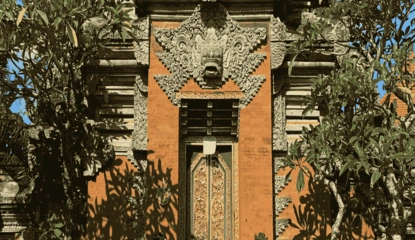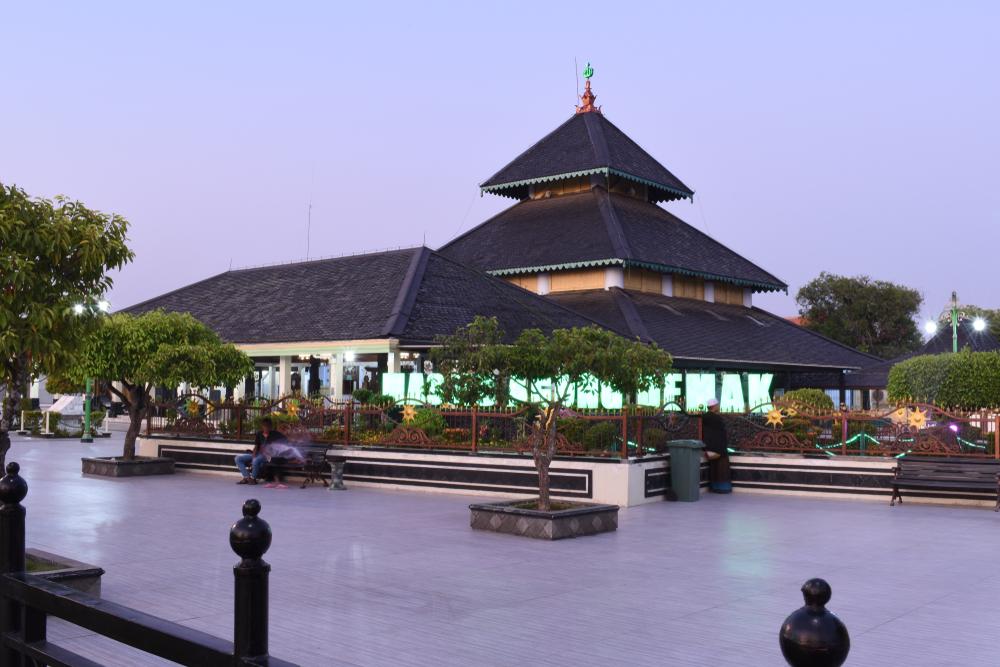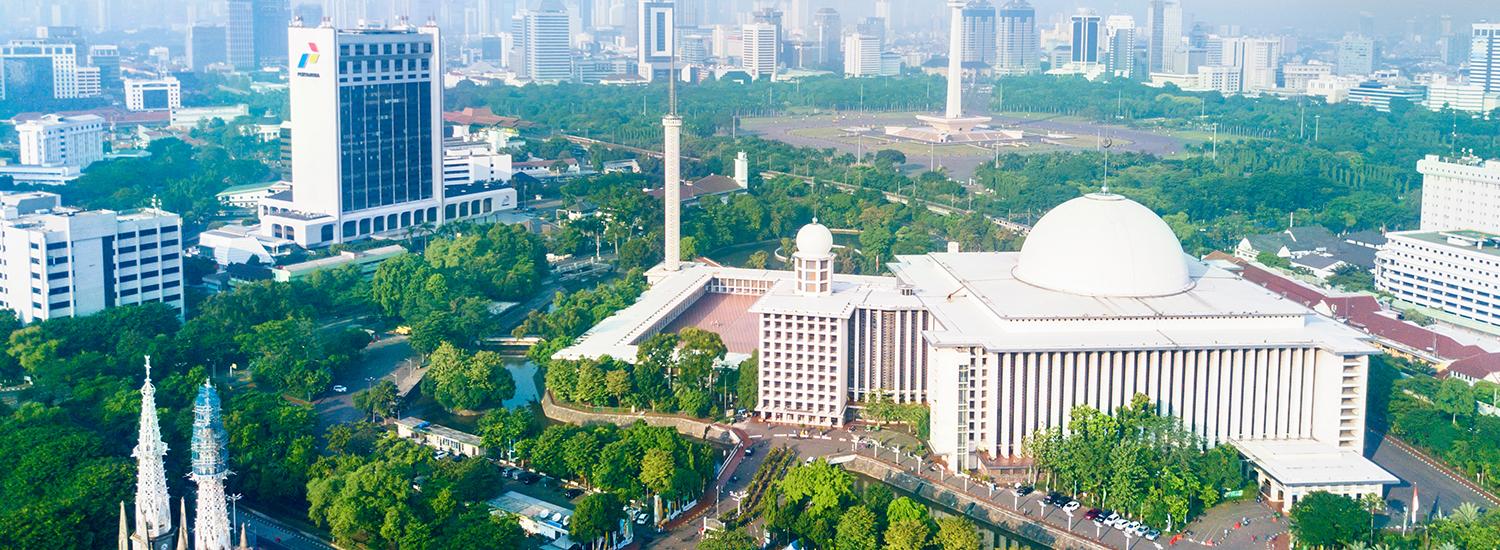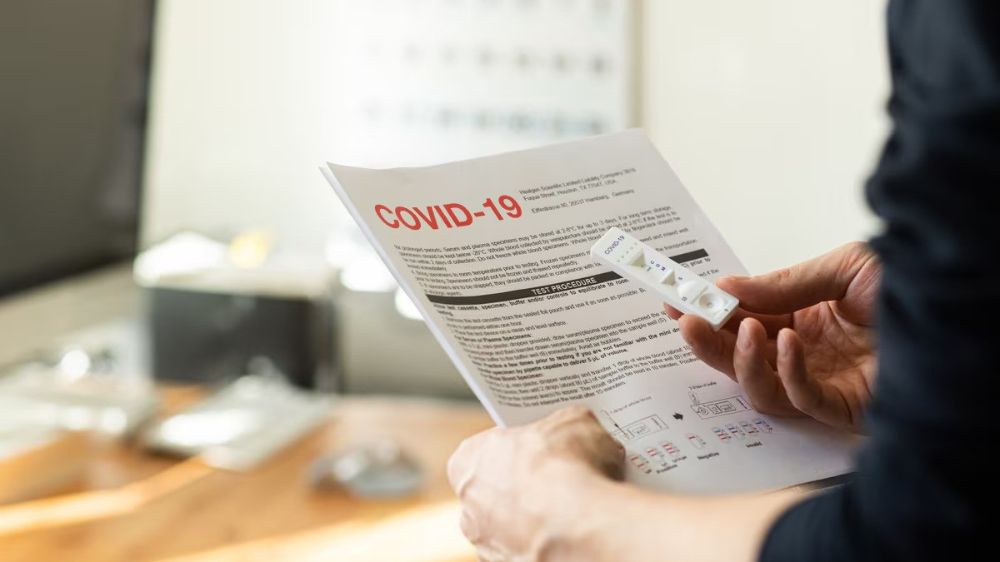The Great Mosque of Demak is more than just a place of Muslim worship, but also a living monument and silent witness to the spread of Islam in the archipelago.
The grand mosque is also a symbol of the harmonious blend of religious teachings with Javanese culture. Before visiting it, you can find the following helpful information.
Getting to Know the Great Mosque of Demak: The Oldest Mosque on the Island of Java
In the heart of Demak City, Central Java, stands a timeless historical building, the Great Mosque of Demak.
It is the oldest mosque in Java and is a priceless legacy of the Wali Songo, nine legendary Islamic scholars.
Architecture of the Great Mosque of Demak: Symbolism in Every Pillar and Roof
Every corner of this mosque exudes an aura of spirituality and wisdom, inviting visitors to delve into the long history of Islam in Java.
The splendor of this mosque is evident in the unique and magnificent architecture and its stunning details. Every detail even contains symbolism.
The design of this grand mosque reflects the beautiful acculturation of Islamic and Javanese culture, making it a model for other traditional mosques.
The Triple Roof and Its Meaning
The most prominent feature of the mosque's architecture is the three-pitched roof that overlaps the foundation below. This roof shape is an adaptation of traditional Javanese temple or pavilion architecture.
Each level of the roof has its philosophical meaning. The first tier is a symbol for sharia (Islamic law), the second for tarekat (spiritual path), and the third for hakikat (divine truth).
This beautiful and meaningful structure shows how Islam was introduced with an accommodating approach to the local culture of its time.
The Legendary Four Saka Guru
Inside the main hall of the mosque, four legendary saka guru or main pillars stand firmly. It is said that these pillars were made by the four Wali Songo, namely Sunan Kalijaga, Sunan Bonang, Sunan Ampel, and Sunan Gunung Jati.
One of the most famous is Saka Tatal, which is believed to have been made by Sunan Kalijaga from wood chips (tatal) that were put together. You can see the details of one of the pillars for yourself.
The four saka guru are not only the physical support of the building, but also a symbol of the four pillars of Islamic power that support da'wah in Java.
Philosophical Carvings and Ornaments
Although it looks simple, every carving and ornament in this mosque is complete with philosophical value. The mosque's mihrab, for example, is decorated with beautiful Arabic calligraphy carvings.
Then the main door of the mosque, known as Pintu Bledeg or Pintu Petir, is said to have been made by a powerful figure at that time named Ki Ageng Selo.
The door is decorated with carvings of twin dragons as a symbol of lightning and also symbolizes the year 1466 AD, the year the mosque was founded. All these elements tell the story of the spiritual and historical journey of the Javanese people at that time.
The Role of the Great Mosque of Demak in the History of the Spread of Islam
The Great Mosque of Demak is not just a building, but also an epicenter of the Islamic movement in Java, the center of all preaching activities of the Wali Songo.
The Center of Islamic Da'wah and Syiar in Java
Since its inception, this famous mosque has functioned as the main center of Islamic preaching and propagation in Java.
The Wali Songo used this mosque as a headquarters to strategize the spread of religion and teach the Qur'an and hadith. The Wali Songo also gave birth to new scholars at the mosque.
A moderate and accommodating da'wah approach to local culture, such as through the art of puppetry by Sunan Kalijaga, was designed and organized from this mosque.
Close Relationship with the Islamic Kingdom of Demak
The mosque has a very close relationship with the Islamic Kingdom of Demak, the first Islamic kingdom in Java. The first Sultan of Demak, Raden Patah, was one of the main figures behind the establishment of this mosque.
It was a symbol of the spiritual and political power of the kingdom, where kings were sworn in, oaths of office were taken and important deliberations were held.
The mosque that calls every Muslim to prayer and the great kingdom that oversees it go hand in hand in carving out the history of Islam in Java.
Its Influence on Other Traditional Mosques in Java
You also need to know that the architecture and function of the Great Mosque of Demak became a prototype or model for the construction of other traditional mosques in Java.
After its successful construction, many ancient mosques in Java, such as the Kudus Mosque, the Old Banten Mosque, or the Surakarta Grand Mosque, adopted the tumpang roof style and saka guru structure.
This shows the strong influence of the mosque's design and philosophy. It also proves how much of an impact this mosque had on the development of Islamic architecture and culture in the archipelago.
Museum of the Great Mosque of Demak: Repository of Living History
Within the mosque grounds, there is a museum that serves as a living repository of history. It contains valuable artifacts and relics related to the mosque and the spread of Islam in Java.
The museum exhibits various ancient artifacts, such as the original drum and kentongan that were used in the early days of the mosque and are very historic.
There are also ceramic relics from the Ming Dynasty, documents and ancient manuscripts that tell the history of the mosque and the Demak Kingdom.
You can also find miniatures of the Great Mosque of Demak showing architectural details, as well as the genealogy of the Wali Songo and the kings of Demak.
A visit to the museum will complete your understanding of the mosque's crucial role in shaping the face of Islam and culture in Java.
How to Get to the Great Mosque of Demak
To get to the grand mosque in Demak City, Central Java, you have several transportation options, depending on where you start your journey.
From Semarang
- Semarang is the closest major city to this grand mosque in Demak. You can get there by private vehicles such as cars and motorcycles. This option is the most flexible and common.
From Semarang, simply follow the Pantura Highway east towards Demak. The journey takes about 45-60 minutes. You can easily find the mosque, which is strategically located in the center of Demak.
- Public Buses: You can start your journey from Terboyo Terminal by taking a bus to Demak. The bus will drop you off at Demak Terminal.
From Terminal Demak, you can continue by becak, ojek, or local taxi to the grand mosque which is not too far away, about 1-2 kilometers.
- Travel or Shuttle: In addition to private or public transportation, you can also take a travel service or shuttle that serves the Semarang-Demak route and offers more comfort.
From Other Cities in Central or East Java
- Train.
If you are coming from Jakarta or Surabaya, you can take the train to Semarang and get off at Tawang Station or Poncol Station. From Semarang, you can continue your journey with the options above.
- Intercity Bus
Almost all intercity buses that cross the Pantura route will pass through Demak. You can find a bus with a final destination of Demak or one that passes through Demak, then get off at Terminal Demak.
This mosque is not only an ancient building, but also a reflection of the roots of Islamic civilization in Java and a symbol of the timelessness of faith.
If you're ready to dive into living history and experience deep spiritual peace, this grand mosque is the perfect destination. Let's get ready to explore the splendor of the Great Mosque of Demak!










